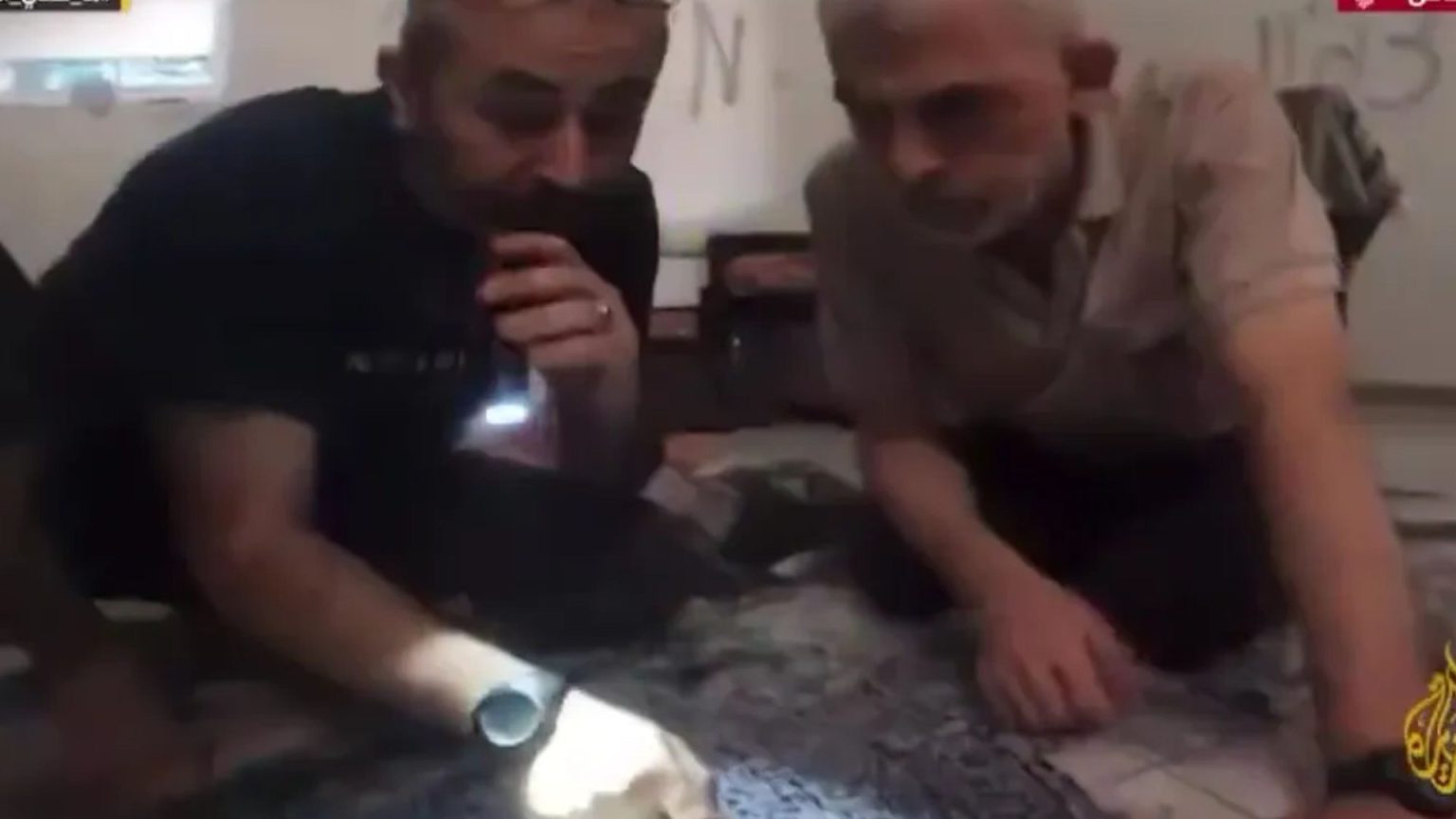New footage, obtained and broadcast by Al-Jazeera, offers a chilling glimpse into the final days of Hamas leader Yahya Sinwar, the mastermind behind the devastating October 7th attack, before his elimination by the Israel Defense Forces (IDF) in October 2024. The video captures Sinwar in various locations amidst the rubble of war-torn Gaza, attempting to maintain command and control of his organization. In one scene, he navigates the debris-strewn streets, cloaked in a heavy shawl in an apparent effort to avoid detection. Wearing a military-style vest, he gestures towards the camera, shaking his finger, a display of defiance even as his surroundings lay in ruins. The Hebrew word “north” scrawled on a nearby wall suggests the prior presence of Israeli forces, adding a layer of tension to the scene and hinting at the ever-present danger surrounding him.
Another segment of the footage reveals Sinwar engaged in what appears to be a strategic planning session. He is seen huddled with a commander, poring over a map spread on the floor of a relatively undamaged room. They trace routes and point to specific locations, highlighting the ongoing efforts to direct Hamas operations even under siege. The footage underscores Sinwar’s continued involvement in the conflict, even as his movements were increasingly restricted and his life increasingly at risk. These images provide a rare look at the operational realities faced by the Hamas leader in the final days of the conflict.
The discovery of Sinwar’s military vest amongst the rubble, draped over the chair where he was reportedly killed, adds a macabre element to the narrative. This artifact, along with a photograph of a document purportedly containing the Hamas order for the October 7th attack, were found by Ashraf Abu Taha, the owner of the Gaza home where Sinwar met his end. These grim discoveries serve as a stark reminder of the violence that marked this period and the ultimate fate of the man who orchestrated the initial attack.
Beyond the Al-Jazeera footage, further insights into Sinwar’s final days have emerged through handwritten notes, believed to be his last testament. These documents, described as his “will,” offer instructions to his followers, particularly regarding the treatment of hostages. The notes emphasize the importance of safeguarding the lives of the captured Israelis, recognizing their value as “bargaining chips” in potential peace negotiations. The author stresses the critical link between the well-being of these hostages and the potential release of Palestinian prisoners held in Israeli jails, demonstrating a calculated pragmatism even amidst the chaos of war. The notes also reportedly contained information about the locations of hostages held in Gaza at the time of writing, providing a valuable piece of intelligence in the efforts to secure their release.
The release of hostages began on January 19th, marking a significant step towards de-escalation and a glimmer of hope for the families of those held captive. Three women, including British-Israeli Emily Damari, were the first to be freed, their ordeal ending after nearly 500 days. Facilitated by the International Committee of the Red Cross, their return marked a tangible outcome of the ceasefire agreement reached between the warring parties. This initial release signaled the potential for further progress and the continued importance of negotiation in resolving the complex and deeply rooted issues driving the conflict.
Following the initial release, Hamas announced the names of four more female IDF soldiers set to be freed on January 25th. This second exchange, involving 180 Palestinian prisoners held in Israel, demonstrated the continued efforts to secure the release of all hostages. However, the ongoing captivity of the two and five-year-old Bibas brothers remains a stark reminder of the human cost of the conflict and the unresolved issues that continue to fuel the cycle of violence. The fate of these young children underscores the urgent need for a lasting peace and a commitment to protecting the most vulnerable victims of the ongoing conflict.




